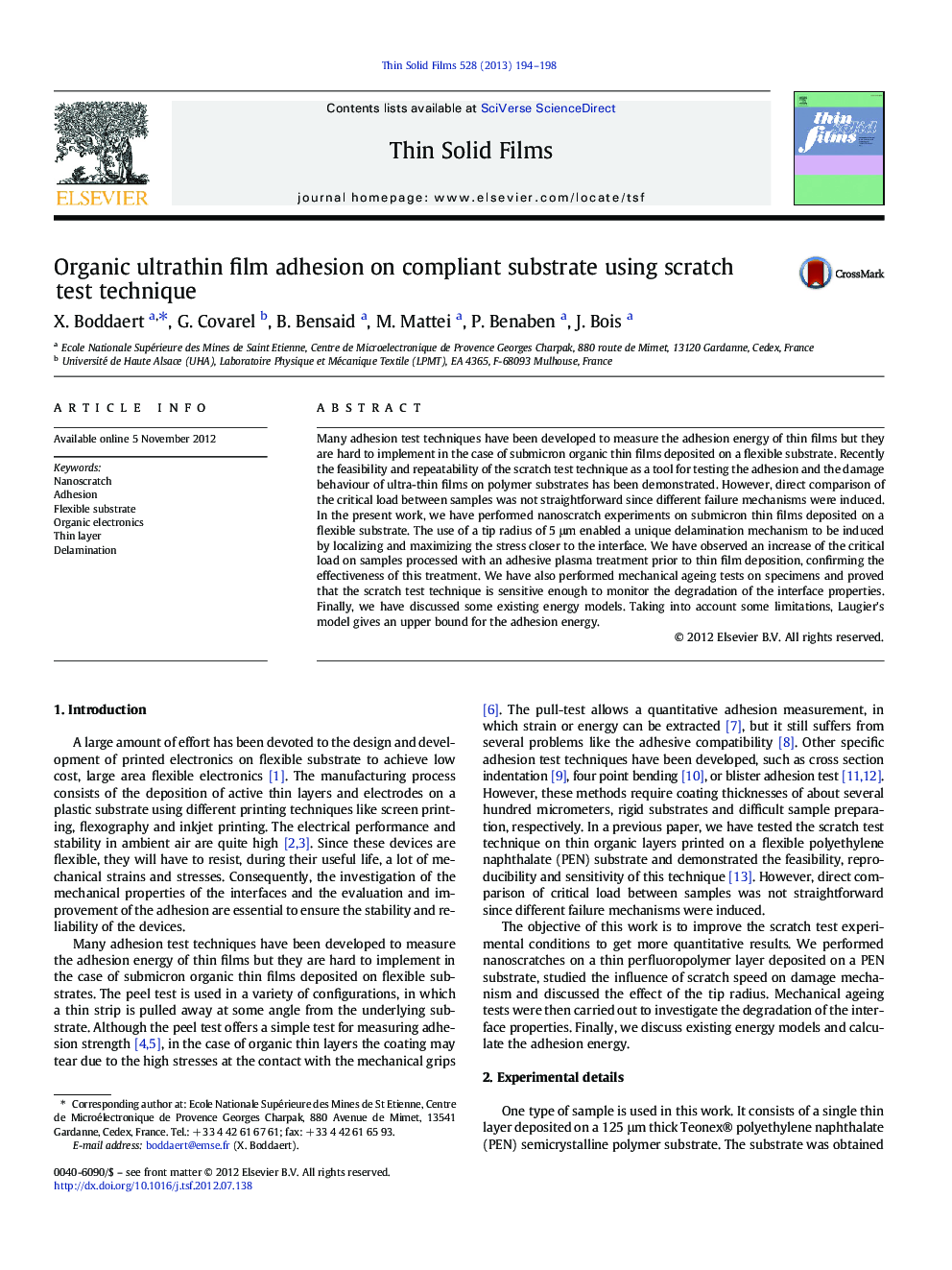| Article ID | Journal | Published Year | Pages | File Type |
|---|---|---|---|---|
| 1666896 | Thin Solid Films | 2013 | 5 Pages |
Many adhesion test techniques have been developed to measure the adhesion energy of thin films but they are hard to implement in the case of submicron organic thin films deposited on a flexible substrate. Recently the feasibility and repeatability of the scratch test technique as a tool for testing the adhesion and the damage behaviour of ultra-thin films on polymer substrates has been demonstrated. However, direct comparison of the critical load between samples was not straightforward since different failure mechanisms were induced. In the present work, we have performed nanoscratch experiments on submicron thin films deposited on a flexible substrate. The use of a tip radius of 5 μm enabled a unique delamination mechanism to be induced by localizing and maximizing the stress closer to the interface. We have observed an increase of the critical load on samples processed with an adhesive plasma treatment prior to thin film deposition, confirming the effectiveness of this treatment. We have also performed mechanical ageing tests on specimens and proved that the scratch test technique is sensitive enough to monitor the degradation of the interface properties. Finally, we have discussed some existing energy models. Taking into account some limitations, Laugier's model gives an upper bound for the adhesion energy.
► We measure adhesion of thin organic film on flexible substrate using scratch test. ► A 5 μm radius tip induces a unique delamination mechanism. ► Critical load is higher on sample processed with an adhesive plasma treatment. ► Fatigue bending tests reduce the adhesion strength. ► Adhesion energy has been estimated using Laugier's model.
